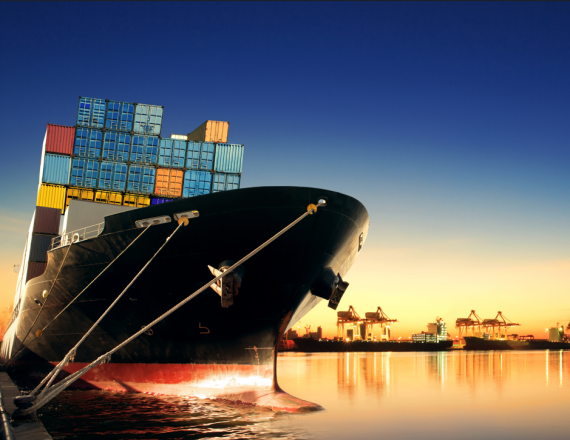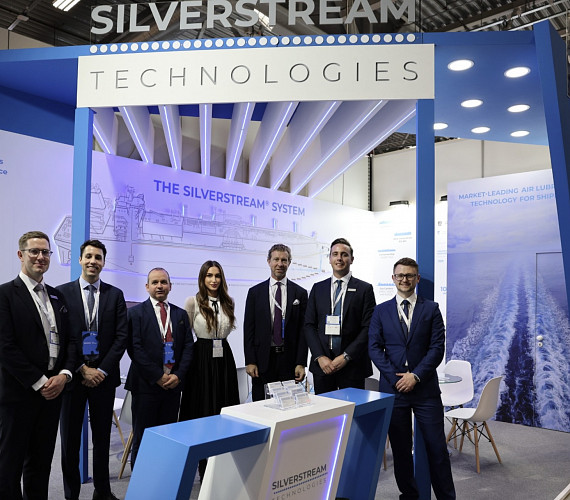When it comes to setting carbon emissions reductions, the global shipping industry long has floated in a sea of its own — mainly because it is pretty difficult to assign accountability to specific countries.
That changed in mid-April when the International Maritime Organization (IMO) managed to wring out a commitment that aims to cut the sector’s footprint in half by 2050. IMO figures the sector contributes about 2 to 4 percent of the world’s emissions (there’s disagreement on how much). That almost sure to increase, as other sectors invest in reductions.
Pretty much everyone agrees that the new target isn’t enough to reach the 1.5 degrees or 2 degrees Celsius temperature mitigation goals of the Paris Agreement — cuts of at least 70 percent would be needed for that. But the new target is better than nothing, and the group will be meeting later this year to set a specific course for action.
“A 50 percent reduction in total GHG emissions was not the truly ambitious, Paris-aligned target we had hoped for but it is a truly significant first step on the path to decarbonization and there is much to congratulate,” said James Mitchell, maritime finance lead with Rocky Mountain Institute-Carbon War Room, in a statement after the negotiations were complete. “Policymakers can begin work on crafting measures to achieve this ambition and shipowners, operators and financiers can put improving energy efficiency at the heart of their business plan today — in line with the agreed 40 percent reduction in carbon intensity by 2030.”
The Carbon War Room’s initiatives include ShippingEfficiency.org, which it launched with RightShip to “increase information flows around the energy efficiency of international shipping and ultimately help reduce the environmental impacts of the world’s shipping fleet.” RightShip provides risk data on more than 76,000 ships. In anticipation of the recent IMO negotiations, I spoke with Mitchell in early March about specific strategies and technologies that will provide steam in the right direction. Here are some takeaways from that conversation…
Using technology to digitize and retrofit ships will inspire efficiency advances
Many processes used to schedule shipments and organize loading and unloading are still highly manual. So, it’s not surprising that sales of freight management software are expected to boom over the next three years — with some forecasts estimating revenue at $54 billion by 2021, compared with $19 billion in 2016.
At least two companies in this segment — Flexport and Freightos — have introduced calculators that help customers estimate the impact of planned shipments so that they can adjust routes accordingly. Reusable water bottle maker Kleen Kanteen, for example, was inspired to reduce its dependence on air freight using the Flexport platform, along with a corresponding decrease in emissions.
“Any sort of technology or collaborative platform that enables, for example, better port scheduling, that will help,” Mitchell said. “You can slow the ship down ahead of time, save a lot of fuel, reduce emissions around land — it’s better for local stakeholders.”
Alongside information technologies that could help operators make more informed decisions are other innovations that directly address how ships operate and how much fuel is consumed. Mitchell cited several specific examples during our conversation. Here are three companies we chatted about:
Norsepower— The Finnish company makes wind assistance rotor technology (a sort of new-age sail) to reduce a ship’s dependence on other fuels by an average of 6 percent in early tests. The company thinks it has the potential to offer reductions of up to 20 percent.
Becker Marine Systems — The German operation’s product portfolio includes technology meant to improve rudder efficiency, such as the Mewis Duct, that reduce power consumption by an estimated 6.5 percent. This approach has been embraced by most major ship owners, according to the company’s website.
Silverstream Technologies — Ever heard of bubble surfing? That’s the innovation touted by this British business. The ideas is that air can be used to “lubricate” the ship’s hull so that it can travel through the water with less resistance.
Read the full article by Heather Clancy from GreenBiz.



